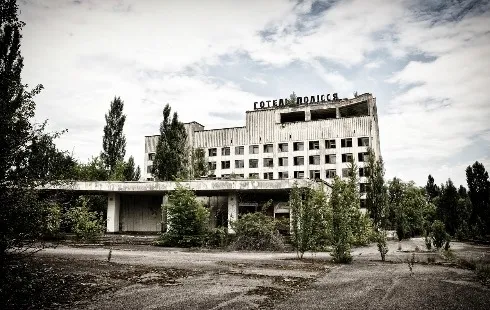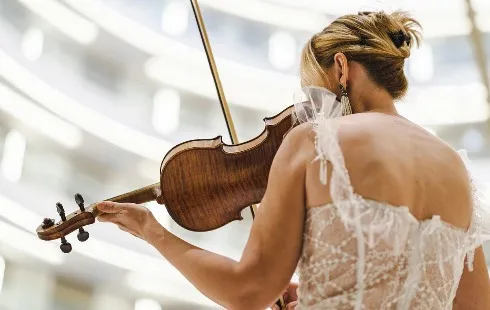
Chaos, catharsis, and charm - post-punk band shame at Munich's Strom
Section: Arts
 Every few years, a glance at shop windows or fashion magazines sparks a familiar feeling:haven't we seen this before? Flared trousers, shoulder pads, slip dresses, bomber jackets, polka dots, and even the beloved animal print all seem to stage periodic comebacks. This is no accident. Fashion, more than perhaps any other cultural industry, thrives on cycles of revival and reinvention. The old is constantly reinterpreted as new, allowing each generation to rediscover styles that once defined the past.
Every few years, a glance at shop windows or fashion magazines sparks a familiar feeling:haven't we seen this before? Flared trousers, shoulder pads, slip dresses, bomber jackets, polka dots, and even the beloved animal print all seem to stage periodic comebacks. This is no accident. Fashion, more than perhaps any other cultural industry, thrives on cycles of revival and reinvention. The old is constantly reinterpreted as new, allowing each generation to rediscover styles that once defined the past.
The Rhythm of Reinvention
Fashion operates on what many in the industry call the "20 year rule": trends tend to reemerge roughly two decades after their initial popularity. The 1970s resurfaced in the 1990s through flared jeans and bohemian blouses; the Y2K aesthetic, dismissed as passé a decade ago, has returned with low-rise jeans, micro tops, and metallic accessories. This cycle is not rigid, but the rhythm is unmistakable.
The cyclical nature of fashion is partly psychological. For younger consumers, styles that once belonged to their parents or grandparents feel fresh, novel, and rebellious. At the same time, for older generations, these comebacks evoke nostalgia, softening the leap into new wardrobes. Designers, meanwhile, find endless creative potential in archives, reinterpreting silhouettes and fabrics with modern techniques, sustainability practices, and updated contexts.
Cultural Memory in Fabric and Cut
Fashion is a visual language, and like any language, it carries cultural memory. A bomber jacket is not simply outerwear; it recalls military history, rebellion in streetwear, and the glossy minimalism of 1990s pop culture. Lace recalls centuries of aristocratic fashion, but also the 1980s' dramatic evening wear and today's romantic blouses.
Each revival is rarely a simple copy. Instead, it is an adaptation: polka dots once danced on 1950s dresses but return today in oversized graphic prints. Balloon pants, iconic in the 1980s, are reimagined with softer fabrics and sustainable textiles. Even aviator sunglasses (first associated with pilots, then rock stars) now appear in futuristic mirrored finishes or oversized silhouettes, signaling reinvention rather than replication.
Economic and Industry Forces
Cycles are also driven by the economics of fashion. Designers and brands operate in a market that demands novelty season after season. Mining the past provides a steady source of inspiration that feels simultaneously familiar and innovative. The archives of luxury houses such as Dior, Chanel, or Versace are not just history, they are active resources, offering patterns, cuts, and prints that can be reworked for modern audiences.
Moreover,media and celebrity culture accelerate these revivals. When a star wears a 1990s slip dress on the red carpet or a vintage bomber jacket in a viral street style photo, the cycle accelerates. Social media amplifies this effect, exposing younger consumers to images of past decades with unprecedented ease.
The Role of Sustainability
In recent years, the cyclical nature of fashion has gained a new dimension:sustainability. Vintage and second hand markets are thriving, not just as alternatives to fast fashion, but as style statements in themselves. Wearing archive pieces or reworked garments ties directly into the cyclical rhythm, giving garments longer lives and reinforcing fashion's habit of returning to its roots.
This shift has also influenced design. Rather than producing endless novelty, many labels highlight timeless cuts or revive proven silhouettes with sustainable fabrics. Thus, the cyclical quality of fashion becomes not just aesthetic, but ethical.
What Comes Around, Goes Around
The cyclicality of fashion is not a flaw; it is its lifeblood. It ensures continuity between generations, preserves cultural memory, and offers endless opportunities for reinterpretation. While technology, politics, and social change will always shape the specifics of what returns, the underlying rhythm remains the same: old styles never vanish, they simply wait for their moment to shine again.
In the end, fashion's cycles remind us of a simple truth: what we wear is never only about the present. Each trend carries echoes of the past and hints of the future, woven into fabric, silhouette, and design. And so the cycle continues, inevitable, familiar, and always ready to surprise.

Section: Arts

Section: Politics

Section: News

Section: News

Section: News

Section: Arts

Section: News

Section: Arts

Section: Arts

Section: Fashion
Health Insurance in Germany is compulsory and sometimes complicated, not to mention expensive. As an expat, you are required to navigate this landscape within weeks of arriving, so check our FAQ on PKV. For our guide on resources and access to agents who can give you a competitive quote, try our PKV Cost comparison tool.
Germany is famous for its medical expertise and extensive number of hospitals and clinics. See this comprehensive directory of hospitals and clinics across the country, complete with links to their websites, addresses, contact info, and specializations/services.
Curated by Fried Dähn and Thomas Maos, this event is part of the Sonic Visions series, featuring an engaging performance that intertwines sound, music, and visuals. This edition presents THE WATS, a narrative where three travelers in the desolate, apocalyptic landscapes of New Zealand encounter a...



No comments yet. Be the first to comment!